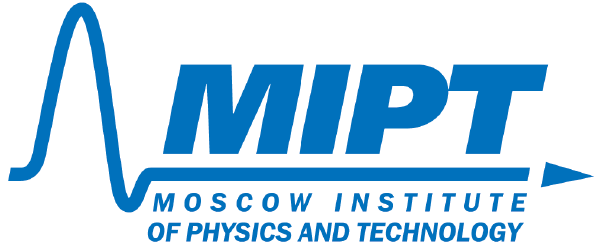Click here to download the IPT 2018 Problem list in PDF format.
If you have any questions about the list, or if you feel that some problems need clarifications, please write to us using the contact form. We will publish your questions and our answers below for each problem.
Release date: August 13, 2017.
Last revision : No revision.
1. Sound thermometer 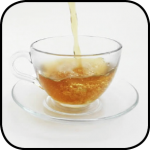
Devise a method to obtain the temperature of a fluid by listening to the sound emitted when it is poured into a cup (see video). State the precision, accuracy and the limits of your method as well as the important parameters of the fluid.
2. Static speaker
Build an audio speaker without any moving part. Discuss the maximum bandwidth, signal-to-noise ratio and power efficiency achieved with your design. Is it possible to modify your device to use it as a microphone?
3. Ink tree
When a drop of ink is injected inside especially still water, or dropped very close to its surface, it firstly forms a ring of ink which then divides into smaller rings (see video). The process repeats again and again and forms a tree-like structure of ink. What is the maximal number of ring divisions that one can see and how does it depend on the important parameters?
4. Origami launcher
Folded paper structures such as the Miura-ori origami can be programmed to exhibit a wide range of elastic properties depending on their crease and defect patterns. Design and build an origami cannon to vertically launch a standard Ping-Pong ball using only a single uncut sheet of A4 paper (80g/m²). How is the height of the ball elevation related to the folding pattern? Optimize your design to achieve the maximum height possible.
5. Fluidic Calculator
Droplets having different concentrations of food coloring (containing propylene glycol) move in beautiful and intricate patterns when placed on a clear glass slide (see video). A wide variety of autonomous fluidic machines can be produced using this property. Implement diverse arithmetic operations using such droplets and optimize the operation speed.
6. Sonic black hole
A sonic black hole is a phenomenon in which sound is unable to escape a region of space which is not bounded by any walls. Just the same as for usual black holes where light is unable to escape some region of spacetime. Try to create your own sonic black hole. What represents the event horizon? Does the Hawking radiation exist for your black hole model? Which properties of usual black holes cannot be represented?
7. Half-life sparkles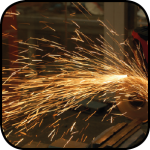
Sparks caused by an angle grinder tend to fly over a certain distance and then to split into several smaller sparks. What causes them to split? What is the condition for a split to occur? What influences the distance before the split? What will be the distance distribution of the sparks to fly?
Be extremely careful when performing experiments!
8. Candle lighting trick
It is possible to relight a candle that has just been blown out by lighting the smoke that is created in the process (see video). Indeed, the smoke contains vaporized wax which is the substance that burns in the flame in the first place. What is the maximum distance (between the match and the candle) from which one can relight the candle? Identify the important parameters and find how they influence this maximal distance.
9. Screaming balloon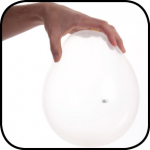
If you put a hex nut in a balloon it is possible to make it «scream» by giving a certain rotational movement to the balloon (see video). How do the characteristics of the sound produced depend on the important parameters of the system?
10. Quaint jet
When water is forced through a thin slit, the flow sometimes takes the shape of a helix. Describe the phenomenon and explain the dependence of the aspect ratio(s) of the helix on the fluid parameters, parameters of the flow and the shape of the nozzle.
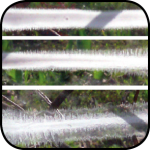
11. Chalk on the water
If you draw a line on a glass surface covered with a thin layer of water using chalk, the line will blur in offshoots distributed in the lengthwise direction. What are the statistical properties of this distribution and how do they depend on the important parameters?
12. Particle detectors for dummies
Build a simple device that can detect cosmic ray particles. Characterize the particle identification capabilities of your device. Try to test your device in different conditions and also try to obtain the energy spectrum of the cosmic ray particles.
13. Egg white pearls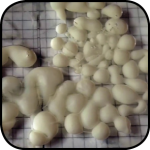
Egg whites are separated from the yolk and put into a syringe. From the syringe, the egg white is ejected into heated oil while the tip is in motion (see video). How does the size of the egg white pearls produced depend on the various parameters such as the temperature of the oil, ejection and motion speed, nozzle diameter or the non-Newtonian properties of egg whites?
Be extremely careful when performing experiments!
14. Erratic raindrops
When a car moves with high speed in rain sometimes the drops on its side window walk up but not down. Explain the phenomenon and find the conditions for it to occur (size of the drops and the car speed for example). What determines the drop trajectory and how does it depend on the important parameters?
15. High-speed CD
If one spins a compact disk very fast, its surface starts to warp (see video). However one can observe that the warp rotates with a different speed than the point on the surface, How do these two rotational velocities relate to each other?
Be extremely careful when performing experiments!
16. Bubble light
Sonoluminescence is the emission of short bursts of light from imploding bubbles in liquid. Although the effect has been known for decades, there is no widely-accepted explanation. Suggest a setup to observe the phenomenon and to study the spectrum of emitted light. Can this effect be used to obtain coherent laser-like light emission?

17. Balancing pebble
Stones which are taken by wind on the ice of Baikal Lake can be found after some time staying on a thin «stand». Reproduce and explain this «stand» phenomenon and estimate the curve of the stand depending on the important parameters.
Many thanks to all the people who contributed to
the problem list and helped with the problem selection!
